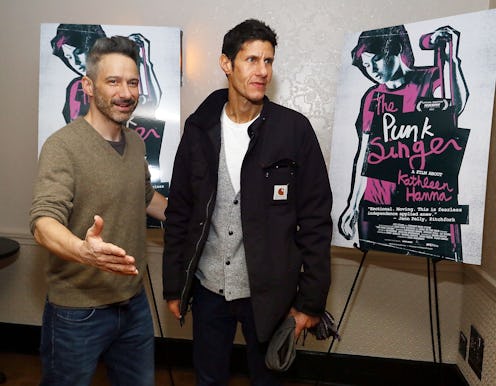Entertainment
The Evolution of the Beastie Boys
After 33 years, eight albums, and seemingly endless amounts of commercial lawsuits, the Beastie Boys are finally calling it quits. The announcement doesn't exactly come as a surprise. The band has been releasing little music since member Adam "MCA" Yauch died of cancer in 2012, and none of it under the "Beastie Boys" name. In fact, remaining band members Adam "Ad-Rock" Horowitz and Michael "Mike D" Diamond only announced their dissolution as part of an interview about how they turned down an offer for their song "Sabotage" to appear in Arnold Schwarzenegger's movie of the same name. Yauch's will states that his music, art, or likeness cannot be used to promote any commercial products, and the band says they don't plan to make any more music without him. “We have not been able to tour since MCA, Adam Yauch, died,” Diamond said. “We can’t make new music.”
While the band has been inactive for the past few years, they've been hugely influential to a wide array of musicians to artists from a wide range of genres. From their beginnings as youthful, snotty punks to the goofy, thoughtful artists they are today, the Beastie Boys have had many second acts in their career, and they've changed themselves just as much as they've changed the face of music.
Punk Beginnings: Polly Wog Stew (1982)
The Beastie Boy's humble beginnings sound quite different from some of their most famous songs. Polly Wog Stew is an EP that's 10 minutes of hard, fast, punch-in-the-gut punk music from back when they were a four piece band minus Adam Horovitz and plus Kate Schellenbach and John Berry. The Beastie Boys may have ditched some of the thrashing guitars, but they hung onto the defiant attitude.
Fight for Your Right: "Cooky Puss" and Licensed to Ill
You got your rap in my punk! You got your punk in my rap! The success of the Beastie Boys' first hip hop single, "Cooky Puss" (based on a prank call to Carvel Ice Cream) once John Berry was replaced with Adam Horovitz let the band know that they were onto something. So, the band decided to incorporate more hip hop into their shows with the help from a little known DJ named Rick Rubin. Once Kate Schellenbach left the band, Rubin produced their next record, Licensed to Ill. And with that, the Beastie Boys were officially reinvented as the snotty little punk kids of hip hop.
Get it Together: Paul's Boutique to To the Five Boroughs
This could very well be considered the golden years of the Beastie Boys. This was when the band expanded out from yelling about parties over guitar samples to other worlds entirely. They sampled funk and jazz, collaborated with some of hip hop's elite, and even started of play instruments again on their own albums. In other words, they got serious, in all the best sense of the word. And in doing so, they produced some of their best work. Sure, Paul's Boutique may be the most critically acclaimed Beastie Boys album, but there's plenty from this era to wax poetic about, from "Intergalactic" to "Ch-Check It Out."
Off the Grid: The Mix-Up and The Hot Sauce Committee Part Two
The band's final stage of evolution seemed to be more exploring the evolution of hip hop itself, most clearly with the all instrumental record, The Mix Up. The Hot Sauce Committee albums, which were meant to be a two-part series, saw a return to much of the band's original sound, yet still explored a range of instrumentals with a combination of obscure samples and live instruments. But Yauch passed away before Hot Sauce Committee Part 1 could be released, and that was more or less it for the band. Sure, these albums may not be considered the most "classic" albums within the band's discography. But nonetheless, they still displayed a youthful curiosity about them. Horovitz and Diamond may be done with the Beastie Boys, but these final two albums show that they're far from done with exploring the realms of music.
